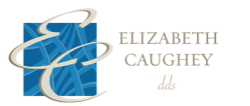What is Orofacial Myology?
Orofacial myology refers to the study and treatment of oral and facial muscles as they relate to airway, speech, dentition, chewing/bolus collection, swallowing and overall mental and physical health. Mouth breathing, pacifier use, thumb sucking habit, reverse swallow, tongue thrust, lisp, articulation disorders and orthodontia regression can all benefit from orofacial myology (also called myofunctional) treatment. When a collaborative approach is taken between patient, orofacial myologist (myofunctional therapist), otolaryngologist, dentist and orthodontist, breathing can improve, illnesses can decrease, noxious habits can be eliminated and speech can improve. Learn more here: www.iaom.com/faq/
Symptoms
Orofacial myology disorders (OMD’s) present in a variety of ways, with different root causes and symptoms. As a result, I’m introduced to new patients through various channels. Some are referred by dentists, orthodontists or ENT’s; others reach out independently for help with speech delays or other concerns. When left untreated without orofacial myology (myofunctional) therapy, OMD’s can result in one or more of the following symptoms:
- Open mouth breathing
- Head, neck, jaw or facial pain or tension
- Recurrent headaches
- Articulation and/or phonological delays/disorders
- Ankyloglossia (tongue-tie)
- Oral habits: Thumb sucking, finger sucking, bruxing or grinding of teeth, or tongue or cheek sucking
- Dental occlusion changes and/or orthodontia regression
- Resting with lips apart
- Tongue thrust
- A forward resting posture of the tongue between or against the teeth
- Poorly controlled swallow and difficulty swallowing pills
Treatment
We provide high quality, personalized treatment to children, teens and adults. We continuously refine our diagnostic skills, referral base (should we need other professionals to be part of our team), and latest assessment tools and therapeutic resources. Treatment goals may include:
- Shift to nasal breathing and normalized respiration
- Correct resting postures of the tongue, lips and jaw
- Neuromuscular re-education to eliminate impairment of muscle tongue function
- Eliminate adverse oral habits or behaviors
- Correct abnormal and deviated swallowing patterns
- Correct muscle patterns of the tongue, lips and jaw during speech production
Patients
Treatment programs are individualized and focus on tongue and facial resting postures, swallowing and speech articulation. Children, teens and adults can benefit from orofacial myology (myofunctional) therapy. The orofacial myology therapy sessions are just a part of a successful program. Clients will be expected to complete daily exercises in order for muscle strength, patterns and range of motion to make desired changes with children benefitting from family support to practice prescribed exercises.


